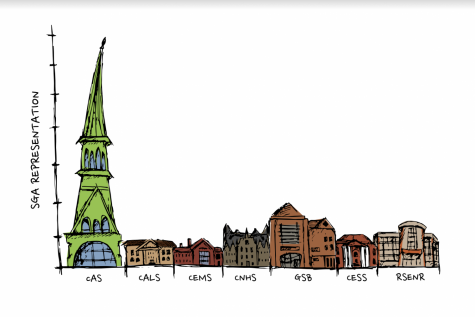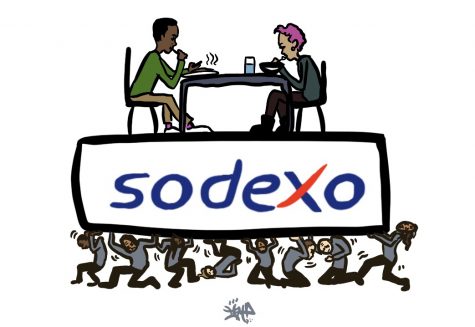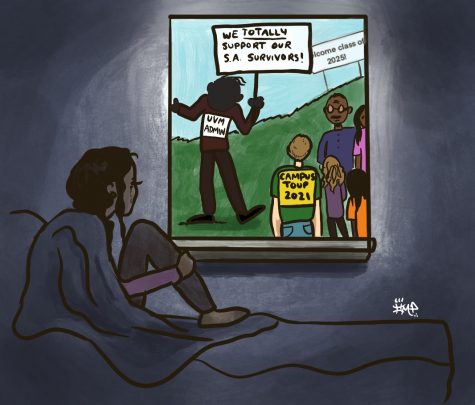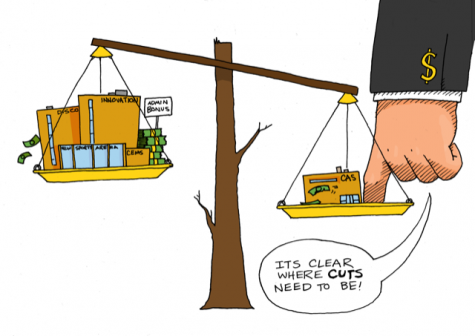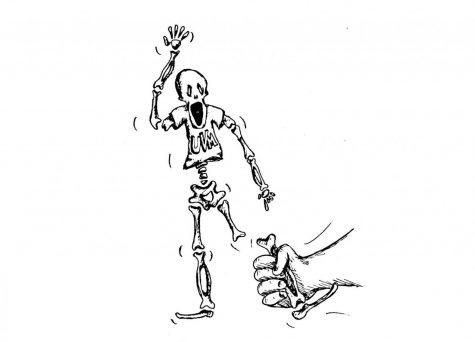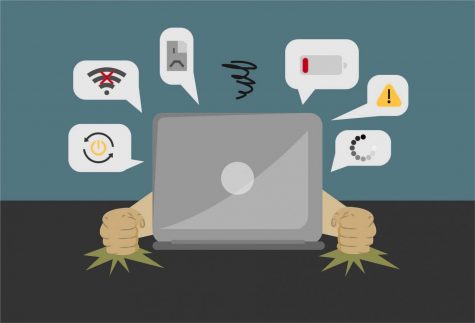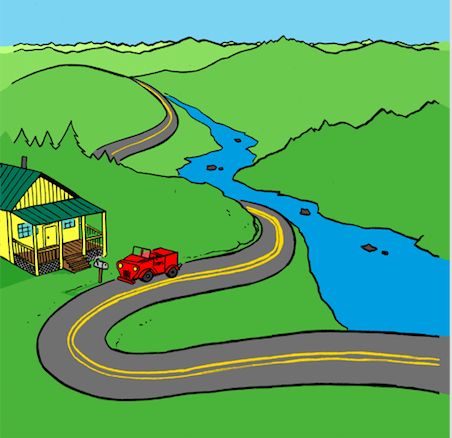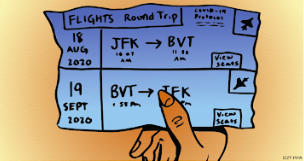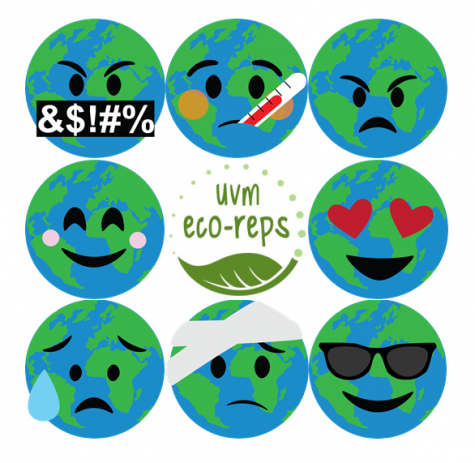Eco-Rep trash tips: compost, recycle, decontaminate
March 10, 2019
Let’s talk trash, baby. What goes in it? What should go in it? Not all of us are Rubenstein students, and sometimes it’s easier to just throw things in the landfill.
That’s a good place to start: When In Doubt, Throw It Out.
The UVM Eco-Reps are a group of student leaders committed to providing a deeper understanding of how to sort waste.
So committed, they spent the morning of Feb. 2 digging through over 1,000 pounds of residence hall trash and recycling.
We found that 22 percent of what was recycled was recycled incorrectly and 46 percent of what was thrown into the landfill could have been diverted to the compost, recycling, techno trash or donation bins.
Contamination, especially from recycling, is a bigger problem than ever for the U.S.
For the last 25 years, China imported most of the U.S.’s recyclables, but China’s recent National Sword Policy has a new contamination standard of merely 0.5 percent.
That means the U.S. must become even more knowledgeable and rigorous in its recycling practices, lest we contaminate our recycling to the point of no return — aka, it simply gets diverted to the landfill.
UVM Eco-Reps are taking results from the residence halls to implement programs specific to local contamination.
We’ll share some of the biggest culprits here so you can do your part in effective waste disposal practices.
Food scraps: they are compostable. Apple cores, stale bread, orange peels etc. can be disposed of in the green compost bins in the lobbies of residence halls. Ask the front desk for a brown compost bag to keep in your room. When you’ve filled the bag, simply compost the entire bag and ask for a new one.
Coffee cups: the only thing standardized about the coffee cup styles on campus are the sleeves, which are always recyclable.
Paper towels: any type, whether brown, bleached or colored, are always compostable.
Dirty recycling: this includes yogurt containers and pizza boxes with food stuck to them. These should be rinsed, cleaned out and recycled. If you can’t rinse or clean out these containers, it’s better to put them in the landfill than dirty up the rest of the recycling.
Packing products: remove material like packing peanuts and bubble wrap from cardboard boxes, break them down and recycle. Bubble mailers like the ones Amazon uses should go in the landfill.
Black plastic: black plastic, like the containers from Wow Bao at the University Marche, should be put into the landfill.
Starting in March, Eco-Reps will be implementing a Points of Intervention campaign focused on the upstream factor of waste: the Linear Consumption Economy.
This system uses raw materials to create products that only end up in the landfill and whose production and packaging materials are also wasted along the way.
Not only is this method unsustainable, its effects are also mainly felt by marginalized groups in society, such as racial and other minorities.
Landfills, garbage patches and other waste-related undesirables are disproportionately near people who have little to no power to move away from them.
Eco-Reps will be offering ways to reduce waste and support social justice. Look for programming related to reusing, resourcing, repairing and repurposing. Follow @uvmecoreps on Instagram for updates.









